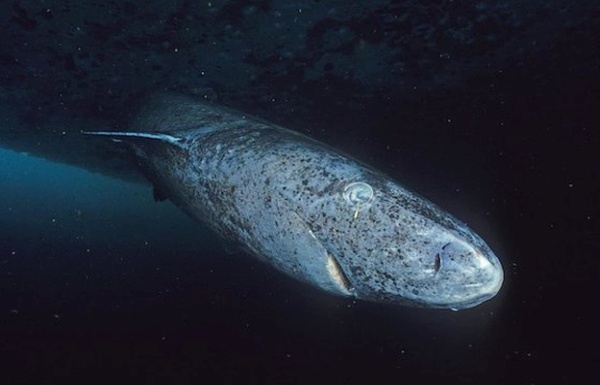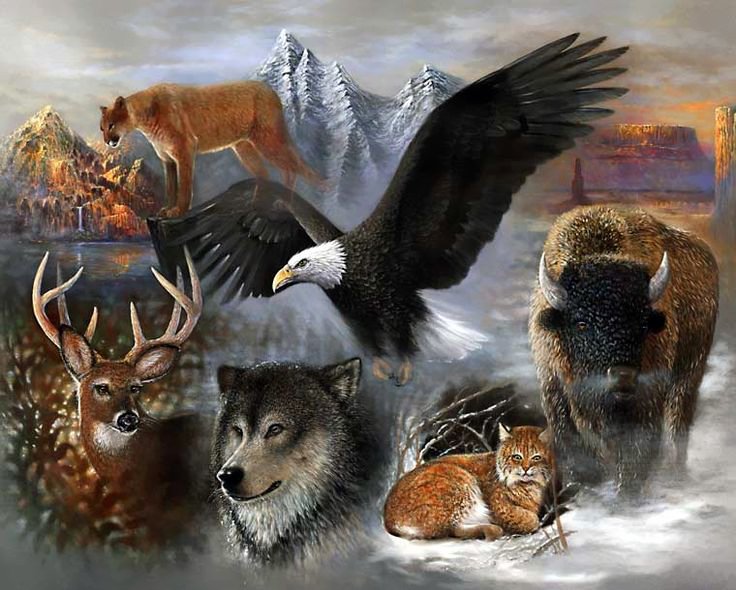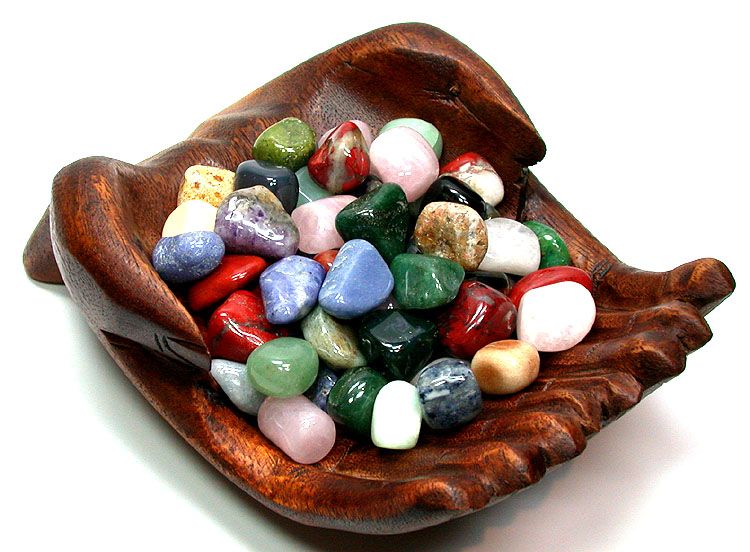Several Short Sentences About Greenland Sharks
- Details
- Written by Dave Pollard
I‘ve written these “several short sentences” articles before about two astonishing creatures — jellyfish and bats. This article is about another ancient resident of earth, the Greenland shark, known to the Kalaallisut (Greenlandic First Nation) as eqalussuaq (“huge fish”). It shares a quality with early humans, ravens and other very intelligent animals — we’re all scavengers, not hunters, at heart. Here are some other interesting discoveries about these amazing animals:
- They are the longest-living vertebrates on the planet. No known current or past species of fish, amphibian, reptile, bird or mammal has ever lived longer. Two hundred year-old eqalussuaq are common, and some have been alive more than twice as long. A few still roaming around were probably born before Shakespeare, before the invention of telescopes or newspapers.
- They are true apex predators. Even the rare humans that encounter them generally ignore them, since their flesh, unless processed through a lengthy and complicated ritual, is highly toxic.
- Except to indigenous people and Icelanders, they are basically unknown and unstudied. They were never photographed until 1995, nor videoed in their native environment until 2003.
- They grow to more than 20 feet (6-7m) in length and weigh as adults a little over a tonne. This is despite the fact they only grow an inch every three years, though they never stop growing. That’s one of the reasons scientists are so sure of their astounding longevity.
- They move at less than 1 mph, and top out at about 2 mph, but because of their deep colouring and stealth can often suck in and swallow whole seals, sea lions, and other creatures, which remain unaware of the shark’s looming presence. Youngsters (less than 120 years old) eat mostly squid, but then graduate to larger fish and other ‘seafood’ as they reach adulthood. Perhaps of necessity because of their slowness, Greenland sharks are also carrion eaters, able to process, and content to eat, creatures that have been dead a long time, including drowned and frozen deer, moose and polar bears. They are the ocean’s equivalent to vultures.
- Their nostrils aren’t needed for breathing (they have gills) but are used solely for smelling. They can smell small prey (dead or alive) up to a mile away.
- They migrate (slowly) to find waters that are just above the freezing mark. When they go south (sometimes as far as the mid-latitudes), they often swim deep, as much as 1-2 miles below the surface where the water temperature is near 0ºC, a depth with enormous pressure (enough to rupture a SCUBA tank). They can find oxygen through their gills even at that depth. And like most sharks, they have cartilage instead of bones, so the enormous pressure does not cause fractures.
- They are often infected by a bioluminescent parasite on their eyes — but only apparently in the northern part of their range. The parasite’s presence, even when it causes blindness, doesn’t seem to affect longevity, since the sharks depend mostly on smell, hearing, and its unique magnetic and pressure-detecting senses to find food and mates. Whether the bioluminescence actually helps the shark navigate in very low-light conditions is debated. In addition, sharks, like cats, have a layer of receptors behind the retina that helps them see better in low-light conditions.
- Normal gestation for females is about — twelve years! The females keep the developing shark embryos inside their bodies in a unique live-birth process called ovoviviparity. Ten pups, 1-2 feet each in size, is a normal litter. They reach sexual maturity at about 150 years of age, and may then have 20 litters over the centuries of adulthood that follow. The ten-pup limit is apparently due to the challenge of oxygenating the living embryos for that long in very deep, cold water.
- The high amounts of self-manufactured TMAO and related ‘antifreeze’ substances in their skin and tissues enable them to avoid freezing and to enhance buoyancy and immunity, as well as making them unpalatable to just about every other creature. The taste of their flesh has been described by epicures as “the most disgusting thing” they have ever tried to eat. “And it smells worse than it tastes”.
- Since so little is known about them, it’s hard to say how long they’ve been in the oceans, but the earliest known sharks date back about 500 million years, nearly as long as jellyfish. They have survived all five mass extinction events.
- Almost 2/3 of the shark’s very sizeable brain is devoted to processing olfactory sense information. It would seem their impression of the world is largely informed by its sense of smell. Whereas our worldview is primarily based on what it looks like to us, to them it is seemingly based on how it smells.
- Shark also have electroreceptors — sensors that can detect minute electrical fields, enabling them to navigate over long distances guided by the planet’s magnetic field, and also to detect and make sense of muscle movements of other sea creatures over large distances.
- And they have yet another little-known sense called the “lateral line”, a series of sensors that allow them to detect and ‘map’ minute differences in water pressure all around them. Perhaps similarly to the way bats use sonar, sharks are able to use their detection of their own body’s waves of movement reflecting off the seafloor and other objects as pressure gradients to ‘visualize’ their surroundings.
- Rather than scales on their skin’s surface, Greenland sharks have denticles, which are sharp enough to tear skin, or divers’ protective suits. Scientists have discovered that these small tooth-like protuberances actually reduce drag and turbulence for the swimming shark, but they can’t figure out why. The denticles also discourage whales that could be large enough to potentially attack a Greenland shark; they would seriously damage the whale’s teeth. Greenlandic fishers have been known to attach the Greenland shark’s skin to the bottom of their shoes to prevent slipping on wet and icy surfaces.
- Just to show how little we know about these creatures, no human has ever observed the mating or birth of a Greenland shark, nor is it known whether gestating sharks have a placenta. And no Greenland shark has ever lived in captivity for more than a month.
Thanks to GEERG for its efforts to protect, and correct misinformation about, these remarkable creatures.
Liked this article? Dive deeper into personal growth and wellness! Check out CrystalWind.ca for spiritual wisdom or explore AromaWorx.ca for natural well-being tips. Spread the positivity—share this with friends on their happiness journey!
Let’s Chat! Drop Your Thoughts Below! ![]()
Latest Articles
Dive into the Mystical World of the Crystal Wind Oracle Deck!
Get All the Enchanting Details Now!
NEW Expanded Boxed Edition!
Now with 58 Cards for Richer Wisdom!

Imagine a world of inspiration and healing, free for all—made possible by YOU!
Donate Now—Ignite the Magic at CrystalWind.ca!

Epilepsy - Finding A Cure
Your donation can make a difference!
Help us find a cure – donate now!
Unlock Your Light: Join Lightworkers Worldwide on CrystalWind.ca!
Follow Us!
Featured This Month
Crystals for Virgo
As the warmth of summer begins to soften into the crispness of autumn, the Sun... Read more
Watermelon Tourmaline
Synonym: Rainbow Tourmaline The watermelon tourmaline is a rare variety t... Read more
The Vine: September 2nd - September 29th
The Autumnal Equinox ( Alban Elfed ) Celtic Symbol : The White Swan Read more
Mabon in Modern Times: Fresh Takes on the Au…
The Mabon season begins somewhere around the 21st-22nd of September and cont... Read more
Peridot: The Healer's Stone
Peridot has been used as a Power Stone for centuries. Peridot fosters emotio... Read more
Mabon Magic: Ideas For Fall Decoration And R…
Welcome (almost!) to Fall! We’re turning the Great Wheel once again, toward ... Read more
Sun in Virgo
An Overview of Sun Sign Characteristics for Virgo Virgo is guided by Mercur... Read more
Virgo Mythology
The Virgo Myth In all of constellation mythology, few legends are as misund... Read more
Sweet Violet
Sweet Violet Faithfulness and modesty. “I will always be true to you.” Helps... Read more


















































